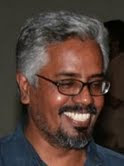
Carry on, Munnabhai!
Lage Raho Munnabhai, the sequel to Munnabhai MBBS, directed by Raj Kumar Hirani, has turned into one of the most successful films in recent years. Responses indicate that, apart from the box office, it has awakened the Gandhians from their slumber, with different groups taking sides as to whether the film is for Gandhism (giving it another lease of life, this time through commercial Bollywood) or only makes a travesty of it for commercial gains thereby trivializing the whole thing. Running as an undercurrent of all these discussions is the dread or total perplexity about such a film becoming phenomenally popular with the masses. This immense popularity, in a way, seems to bring upon the intellectuals a self-imposed responsibility to 'explain' and explicate it. But like Gandhi himself such exercises prove futile from the beginning. They invariably end up either as puerile moralism or mindless indignation. Such ideological or moralistic tools invariably fail to 'explain away' the fuzzy logic of films like this.
For one, the film works at various levels, it is not only about Gandhi or Gandhism. Being a sequel, it has a set of already established characters who have a free take on the System once again. If in the earlier edition, they made fun of the medical and educational institution, (thus also making a bitter comment upon the 'merit' issue and the crass commercialization of the sector), this time they taken on contemporary politics and power structures. For this, they have two aids; one is the figure of Gandhi, who appears to Munna. Gandhi functions as the figure of the past, one that invokes nostalgic idealism and grit, commitment and sacrifice. The other is the radio, the tribal drum as McLuhan would call it, taking Munna's voice to the urban public. While the former functions as the inner voice the latter is its amplification into the external world. (It is Gandhi speaking through Munna, whose voice is in turn spoken by Radio) Woven into this dual discourses are the narratives of love and longing, that of the hero and heroine, that of the aged cronies, of male bonding between Munna and his sidekick Circuit (a striking performance by Arshad Warsi), and of the various people who get into the radio broadcast network of Munna's Gandhiana. Running through all this and animating them are the concerns about corruption, greed, indifference to everything public, duplicity, etc. It is all about the 'inner' and the 'outer'. While Munnabhai is all goodness outside and goondagiri is only the surface, his 'other' Lucky is the reverse. The latter played by Boman Irani, that of the avaricious real estate agent, summarizes it all – though, in the outer, social world, he is a cut throat who wouldn't hesitate to break or bend any rules to get things done, at home he is an angel, dutiful husband and a darling father to his only daughter. His is a character that starkly embodies the total split between private/familial and public/social morality. It is not a coincidence that it is his daughter who ultimately brings about the climax, when she confesses to her father-in-law-to-be about her father manipulating the kundali to 'fix' her marriage. This confession also brings the private and the hidden 'out' into the open. This 'solution' within the domain of the family, in turn results in solving the larger issue – that of giving back the ancestral house that belongs to Jhanvi (Munna's love), which again, is also a move parallel to that of the hero, one from 'goonda-giri' to 'Gandhi-giri'.
The film ends hilariously with Lucky himself ending up as a devotee of Gandhi and gaining his darshan, and making earnest attempts to take his photograph along with him! Kudos to the film, for it indeed needs a lot of grit to make the hero coolly rubbishing kundalini by holding a gun to the pundit's head and asking him to predict his future!
Labels: hindi movie, indian cinema


0 Comments:
Post a Comment
Subscribe to Post Comments [Atom]
<< Home